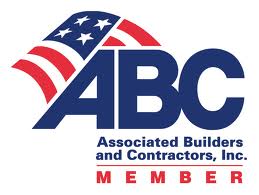Stellar, an architecture, engineering, construction and mechanical services firm, has earned the Associated Builders and Contractors' (ABC) highest national safety designation for 2011-the Safety Training Evaluation Process (STEP) Diamond-level award. Stellar was the only contractor in the Florida First Coast Chapter (with more than 140 member companies), and one of only four in Florida, to earn Diamond status.
There are six levels of STEP achievement: Participant, Bronze, Silver, Gold, Platinum, and Diamond. Member companies that achieve Diamond status-a new level established just last year-are an elite group. More than 2,100 ABC contractor members applied for the STEP program in 2011, with just 94 members achieving STEP Diamond status.
"Our most important goal is to send our employees and subcontractors home safe to their families, every day," said Philip Hinrichs, Stellar's Vice President of Risk Management. "That's why we develop a job-specific safety plan for each and every project and perform safety audits on a regular basis. We're proud to see these efforts recognized."
Stellar has achieved STEP certification 16 years in a row. Now widely accepted as the construction industry's standard measure of safety performance, the STEP awards were established in 1989 to evaluate and improve safety practices and recognize outstanding safety efforts. The award criteria include two industry benchmarks-the experience modification rate (EMR), which is applied to workers' compensation premiums, and the Occupational Safety and Health Administration's (OSHA) recordable injury and illness incidence rates (measured by the number of incidents per 100 employees per year).
STEP Diamond recipients must have long-term records of exceptional safety performance, with EMRs at or below 0.7 (a significantly lower rate than the national average of 1.0) and average incidence rates at least 50 percent below construction industry averages. EMRs, developed by the insurance industry, are based on comparisons of firms doing similar types of work. Lower rates, meaning that fewer or less-severe accidents occurred, result in lower insurance costs. BD+C
Related Stories
Retail Centers | May 18, 2015
ULI forecast sees clear skies for real estate over next three years
With asset availability declining in several sectors, rents and transactions should rise.
Architects | May 17, 2015
NCARB wants the title ‘architect’ confined to those who are licensed
The Council is urging state licensing boards to come up with a substitute for the pre-licensure title ‘Intern.’
Museums | May 13, 2015
The museum of tomorrow: 8 things to know about cultural institutions in today’s society
Entertainment-based experiences, personal journeys, and community engagement are among the key themes that cultural institutions must embrace to stay relevant, write Gensler's Diana Lee and Richard Jacob.
Industrial Facilities | May 11, 2015
SOM-designed Manufacturing and Design Innovation Institute opens in Chicago
The new space will be a place for academia, industries, and civic bodies to collaborate.
Sponsored | Roofing | May 11, 2015
How architects can tap into the expertise of their metal roof manufacturer, part 2
Here are three things metal roof manufacturers can do to help the architect
BIM and Information Technology | May 10, 2015
How beacons will change architecture
Indoor positioning is right around the corner. Here is why it matters.
Architects | May 10, 2015
Harness the connection between managing risk and increasing profitability, Part 2
In Part 1, we covered taking control of the submittals schedule and managing RFIs. Let’s move on to properly allocating substitutions and limiting change orders.
Architects | May 10, 2015
Harness the connection between managing risk and increasing profitability, Part 1
AE firms need to protect themselves against vague contractual and procedural situations during all phases of the project in order to minimize their liability and exposure to risk, writes AEC industry consultant Steve Whitehorn.
Building Team | May 8, 2015
Construction industry adds 45,000 jobs in April
The construction industry saw an increase in jobs during the month of April after losing approximately 9,000 positions in March.
Building Team | May 8, 2015
Surety bond forms specifically for design-build projects now available
The documents are the first of their kind to be coauthored by designers and builders.
















